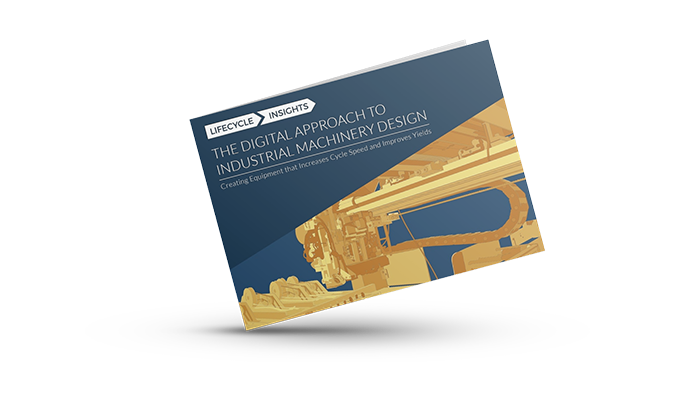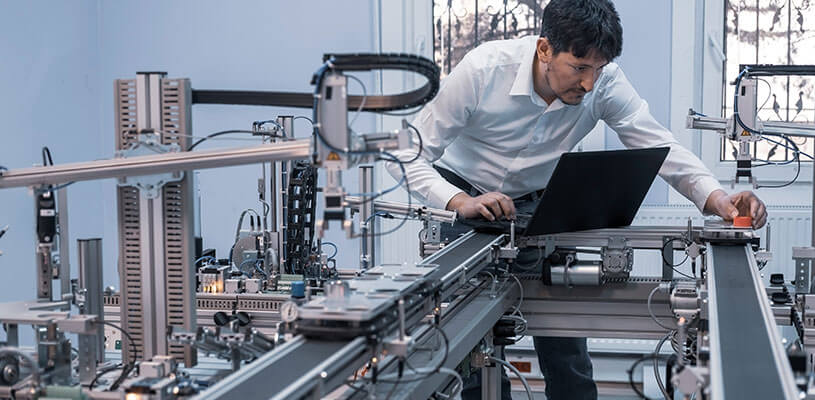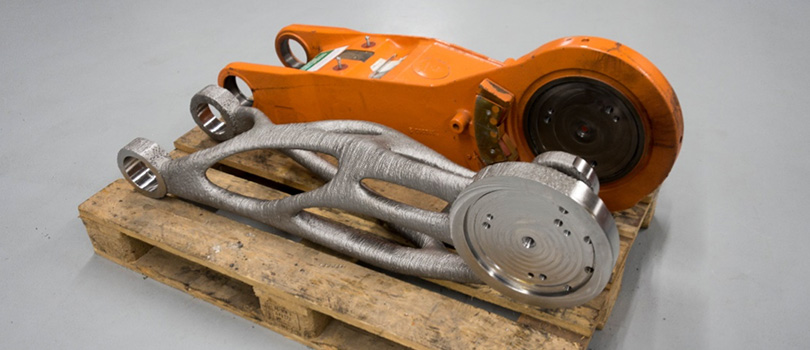
Industrial Machinery
The primary goal of any machine building project is to achieve perfectly running production of high-quality products. By leveraging accurate virtual prototypes, seamless production can be ensured earlier in the development process to help assess and improve product profitability.
The increasing complexity of machines requires active management of technical risks in product line development and customer implementation projects. This can be achieved through multiphysics simulation and model-based development to gain a deeper understanding of the phenomena and root-causes of unwanted behavior. Altair’s integrated product and process simulation tools allow a holistic view of the system from different roles to ensure perfectly running production earlier.
Prototype Virtually
Accurate virtual prototyping offers deeper insight into the structures, mechanisms, and machine elements of industrial machinery, but also provides the foundation of AI-driven decision making.
When simulation correlates closely with test data, machine development can be accelerated with numerical optimization to enhance the operational efficiency, eliminate vibrations, and improve machine dynamics.
Linking M-CAD, E-CAD, and controls, system simulation can address the challenges of increasingly complex machine generations.
Are you weld designs in compliance with FKM directives?
Learn MoreEnable Virtual Commissioning
A variety of tools, methods, semantics, and implementations complicate the exchange of necessary information between structural engineers, software engineers, and testing departments. Joining development disciplines with purpose driven simulation, the system development solution Altair® Twin Activate™ connects with virtual commissioning environments through the functional mockup interface (FMI) standard. Combining the control sequencing with the actual behavior of the machine allows virtual commissioning and reduces the time investments at the customers facility.
Eliminate Vibrations and Improve Dynamics
Multi-body simulation, which considers the detailed behavior of machine elements, creates virtual prototypes that provide the basis for numerical optimization, making targeted mass savings and vibration reduction possible. Through multi-body simulation, process accuracy can be achieved faster, improving the productivity of the machine and production line. Detailed multi-body simulation enables life and fatigue evaluations to reduce maintenance intervals due to material fatigue

Process Optimization with Machine Learning and AI
Machines can be programmed to become self-aware, learning to optimize itself, allowing machine makers to automate path error corrections due to workpiece weights changes, varying manufacturing tolerances, or mechanical aging of the system. Self-learning, automatic path error correction improves part and process quality, increases machine productivity, and reduces tool wear. Control parameter adjustment for speed, accuracy, and surface finish requirements can be automated using integrated electromechanical simulation. Combined with the control system in a holistic system simulation, it allows cause-effect analysis, reduces the adaptation time for control parameters, and creates the basis for machine learning.
Reduce Machine Noise
A targeted simulation can reveal corrective measures to reduce the noise level in the production facility. Structural optimization can be used to identify cost-effective design alternatives and precise multi-body simulation enables acoustic optimization. With targeted mass savings and mass damping, manufacturers can reduce vibration and determine constructive measures for reducing sound emission.
Reduce Weight in Machine Components
Consistent lightweight design throughout the machine helps reduce production, processing, and maintenance costs while also cutting production and idle times. Additionally, commissioning lightweight components benefits from reduced loading times on the way to the customer as well as faster set-up time at the customer's site. Lightweight design results from Altair® Inspire™ and Altair® OptiStruct® consider a variety of manufacturing processes including welded construction, plastic injection molding, sheet metal forming, casting, milling, 3D printing, and more.
Featured Resources

Practical Use Case: High-Pressure Die Casting of an Actuator Housing
This technical paper reports on a collaborative project with Sydow-Druckguss GmbH and two other organizations using simulation methods to assess and optimize process efficiency and enhance product quality early in the design process. In this project, Altair® Inspire™ Cast simulations successfully demonstrated the feasibility of using High-pressure die casting (HPDC) for actuator housing production. The comparison between the simulations and X-ray results from casting trials showed a high level of agreement, confirming the accuracy and reliability of Inspire Cast. This successful endeavor validates Inspire Cast as a high-precision casting simulation tool for the HPDC process.

ABB
To support the use of simulation tools in this endeavor, ABB in Spain enlisted the help of Altair ProductDesign's regional team, thanks to the company's experience in utilizing simulation tools to solve engineering challenges in the robotics industry. The project centered on improving the fatigue performance of a Twin Robot Xbar (TRX), one of ABB’s robotic part transfer systems that moves components between manufacturing stations.

The Digital Approach to Industrial Machinery Design
The need to design more complex industrial machinery on shorter timelines means that companies ask engineers to do more with far less.
Chad Jackson, CEO of Lifecycle Insights, describes the digital approach to industrial machinery design and explains strategies leveraging Simulation, Data Science and High-Performance Computing. He shows how companies creating equipment that increases cycle speed and improves yields in this technical report.
The E-Book covers the following topics:
- THE DEVELOPMENT CHALLENGE OF INDUSTRIAL MACHINERY
- ADDRESSING STRUCTURAL STRESS AND STIFFNESS
- ARCHITECTING AND VALIDATING SYSTEMS DESIGN
- SELECTING THE RIGHT ACTUATION COMPONENTS
- MITIGATING VIBRATION AND EXCITATION
- PLANNING AND VALIDATING CONTROLS DESIGN
- STREAMLINING COMMISSIONING
- MONITORING THROUGH FIELD DATA
- RECAP AND CONCLUSIONS








